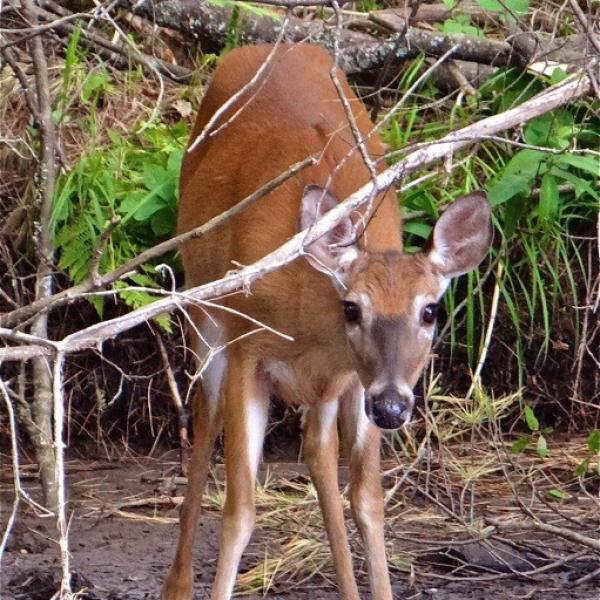
Vermont is an amazingly unique state, and most Vermonters know it. We are governed from the smallest state capital in the Union, boast the country’s highest ratio of dairy cows to people, and produce more maple syrup than anywhere else in the US. Fiercely independent even before our statehood, we have one of the most restrictive billboard laws in the country, are home the highest proportion of people living in rural areas, and sit in the center at one of the most intact, temperate forests in the world. We also enjoy another enviable privilege provided to us simply by living here – access to land.
Since the drafting of the Vermont constitution, access to private land for public use has been protected for Vermonters. By honoring this tradition as a landowner through the allowance of hunters on your property this season, you’re not only developing a sense of community surrounding your land, you’re also actively managing for the next generation of your forest.
White-tailed deer are deeply rooted in our landscape and our state’s identity. They are a native species and play an important role in our ecosystem. However, transformations in our forest structure from centuries of land use changes, the removal of predator species like the gray wolf and mountain lion, and a warming climate have cumulatively allowed for deer to expand their range and increase their population in our state. Increased sprawl and suburbanization have also put these habitat generalists into our backyards and lives more than most people would like. Unfortunately, whether it be in the form of vehicle collisions, garden and landscape damage, or the increased prevalence of Lyme disease, negative encounters with deer are becoming more common for people in Vermont.
Additionally, white-tailed deer browsing has profound implications for the structure and function of Vermont’s forested ecosystems, especially when deer densities are high. When deer are overabundant on the landscape, it has been well-documented that they can create damage to the ecosystem. Overbrowsing can lead to recruitment failure for several tree species (specifically sugar maple, white oak, yellow birch, and white ash), removing the understory and creating an opportunity for establishment of invasive plants. Deer are also known vectors for the wide-range dispersal of invasive plants. Additionally, browse damage to populations of rare and sensitive flowers and declines in the populations of forest songbirds who prefer to nest in shrub and intermediate canopy layers have been documented as deer density increases. Regulated hunting is a wildlife management tool that effectively controls deer densities. By reducing the number of deer on your property, and on the landscape in general, the pressure on the next generation of your forest is decreased.
The Vermont Department of Fish and Wildlife recognizes the over-population of the deer herd in certain areas of the state and the Fish and Wildlife Board has approved new harvest regulations for the hunting season in 2020 to reduce the deer herd. However, it really takes a community to successfully manage a deer herd and the success of these efforts relies on the ability of hunters to access land to hunt on.
We are fortunate to live in a state like Vermont where we can still manage our deer herd through public participation in hunting. We have both the interest from the hunting community and the open spaces to do it. Places like Long Island, Connecticut, and other suburbanized areas in the Eastern United States are left to employ expensive, controversial and sometimes minimally effective, measures like hiring sharpshooters, holding controlled hunts, and deploying sterilization programs in attempts to manage their overabundant deer herd.
As a landowner, allowing hunters on your land and encouraging your neighbors to allow open access as well is an important action that can help improve the health of the forest on your property and across our remarkable state. This is especially true during the archery and muzzleloader seasons – the seasons when does can be hunted and the impact to the deer population can be maximized.
Becoming familiar with your rights and liability as a landowner, and the resources that are available to you, is a good first step. More information about these topics can be found on the Vermont Fish & Wildlife Department Website. If your forests are being impacted by overbrowsing by deer, landowners can connect with hunters looking for access to private land the VTFW Landowner-Hunter Connection site. And as always, if you have any questions, please contact Andrea Shortsleeve, andrea.shortsleeve@vermont.gov.
Written by: Andrea Shortsleeve, Private Lands Habitat Biologist, VT Fish and Wildlife Department
Photo credit: Jane Svetaka